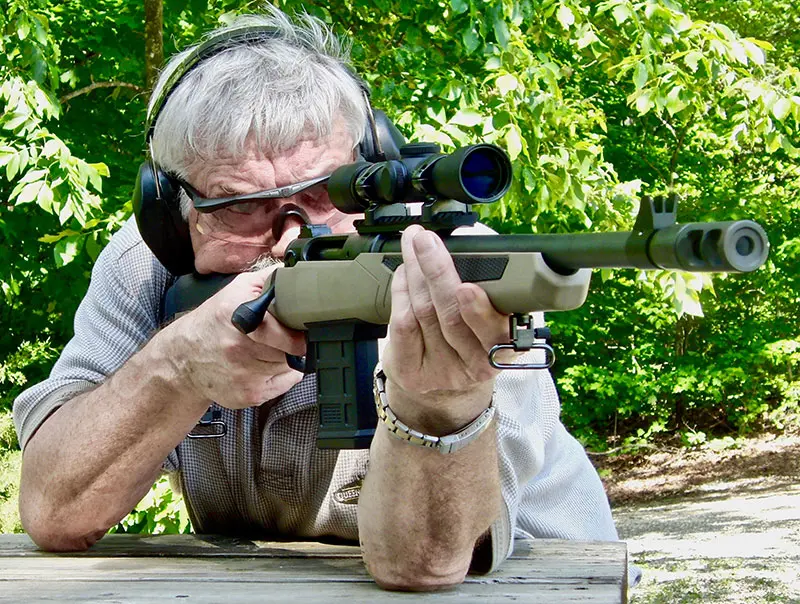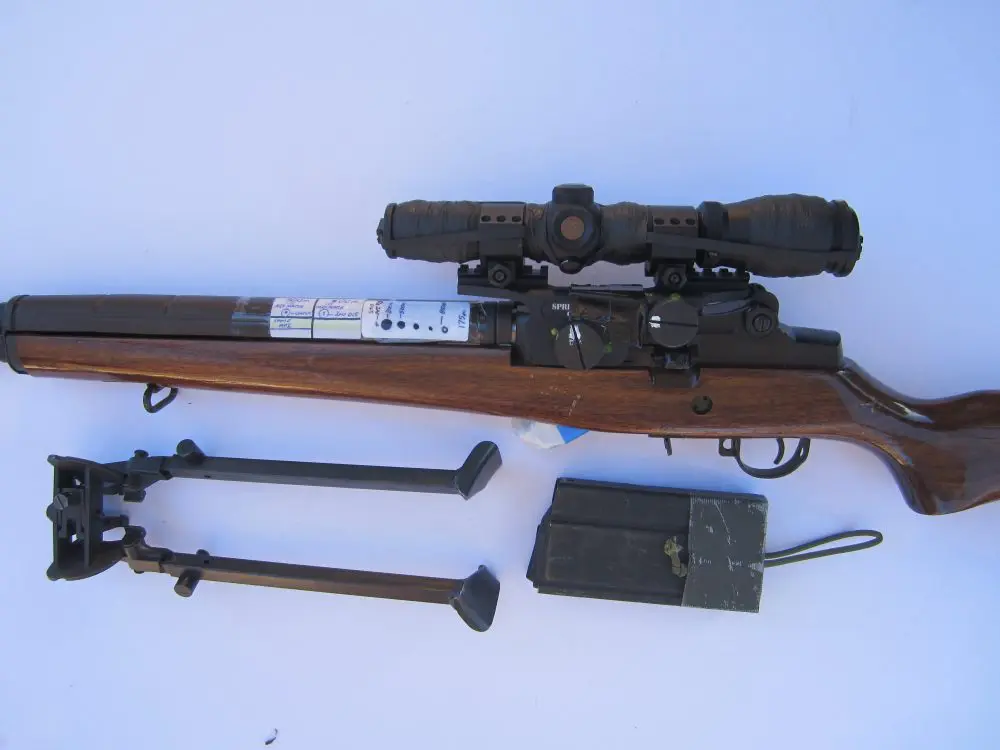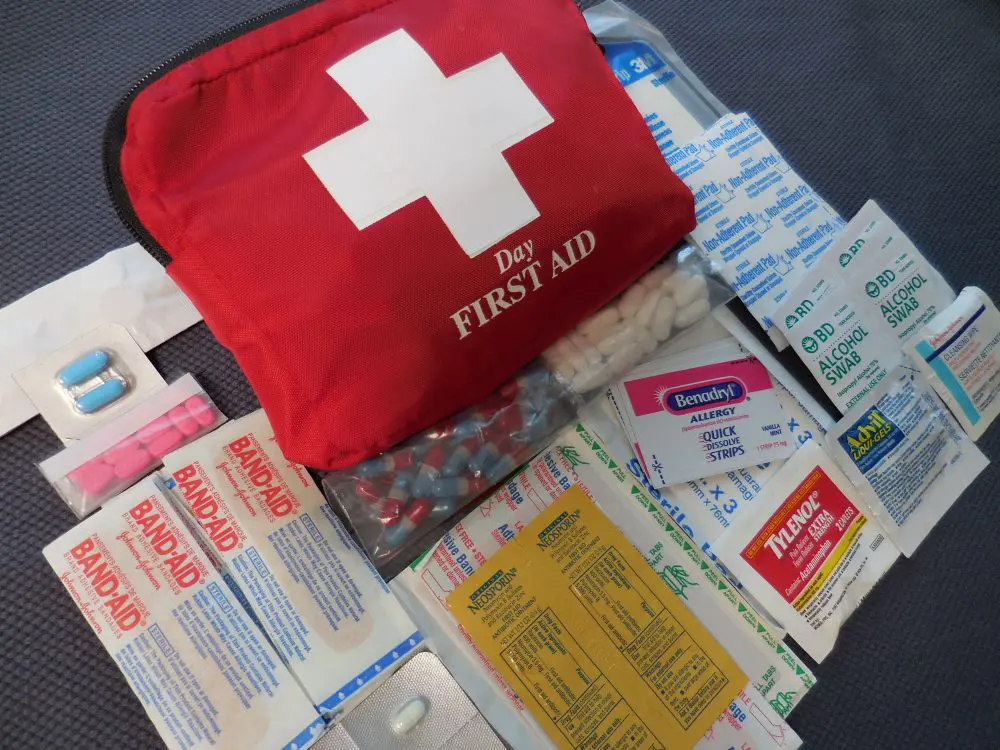I grew up in a Navy family. My father was a Naval Captain and my mother worked for the Naval Department in Washington D.C. My uncle was the Commander and Chief, Pacific Fleet; and my grandfather was a retired Naval submarine Captain. That’s a bit of Navy. One thing I learned early on was the unique voice of “Navy-speak.” Everything that can be distilled down to its essential elements and still convey the same message is compressed into an acronym. LAPD has its own language, as do all other units, departments and various military forces.
It seems that all of this has now crept into the training, tactics and gear that are associated with the activities that the readers of this publication might pursue. So here goes. Apparently a chamber check is no longer just a chamber check but rather a CRV or chambered round verification. OK. A CW is a co-witness, meaning that your optics and mechanical sights are lined up as one and the same. OK. MPRS is a man portable re-hydration system (WWII GIs called it a canteen), and the list goes on and on.
It’s getting harder for me to read articles in the gun press when I have to spend two-thirds of my time trying to figure out what acronym stands for what, and invariably I’m off anyway by a word or two. Perhaps I stand completely alone on this issue, but more complicated doesn’t necessarily mean better or more dressed up—it simply means it’s more complicated. A pig in a dress is still a pig.
Deputy Chief Mike Hillmann of the LAPD once asked me to address a group of SpecOps types (there I go again) on our SIP program over at our Air Support Division. Now I’ve been around a bit, and standing in front of these guys whom I have intense admiration and respect for, and searching my memory for whatever this SIP program was that Hillmann had no doubt just invented and thrown on me (he is the grand master of acronyms, if you know him) had just PMFM (pegged my fun meter). There was dead silence from everyone, and I looked at the guys and then at Mike and then at the guys again and then at Mike again, who was now staring off into the sky, and I whispered to him, “Hey, Mike … what’s SIP?” He replied, “SWAT Insertion Program.” “You mean how we get off helicopters?” “Sure … what else would it be?” “Got it!” It was one of those great moments in time.
I have now decided to join the “new age” rather than force the issue, so here are some new ones that should really take hold: HHWES (pronounced “Hughes”) is a hand-held weapons envelopment system, heretofore called a holster. SCPEVBP (no easy pronunciation available) is a self-contained pre-explosive velocity borne projectile, formerly known as a round or cartridge. OPEFH (still can’t pronounce it without laughing) would be the ocular protective ear fastened headgear that we used to call glasses. BES (pronounced as it’s spelled) is the bipedal encasement system, or shoes.
You’ll love this one—MCAATCRA (please submit pronunciations): manhood containment, anti-abrasion, thermal constant restraint apparel, or boxer shorts. OOBTRTFBMDE (common Russian pronunciation strongly encouraged on this one) is simply the out of battery to return to full battery manual dexterity evolution that some of us old timers (reading this, Clint?) called the speed reload. TSAAFBEP (common Sioux pronunciation) is time sensitive arrival anticipating full blown evolutionary procedures, something we used to call being on time, ready to go.
Now, invariably someone in a class will ask me what I think of the “such and such procedure,” and the query will have been couched in the most veiled and ethereal acronym available to that particular student’s lexicon. There will always be a verrry pregnant pause as I run through about 3,000 variants of what that particular acronym could possibly stand for. The rest of the class, meanwhile, will figure that I’m stumped (which I am) and wonder, how could an instructor not know this? After all, the instructor that you paid to learn from should most certainly be up to date on any and all acronyms that some person in East Timbuktu with waaay too much time on his hands just invented, right? You’re absolutely right.
So here’s the proposition: send us your personal favorite acronyms, even the ones you’ve invented yourself, and we will share them with others and, who knows? Maybe some of them will stick in infamy. Remember; a pig in a dress is still…
[Scott Reitz is a 30-year veteran of the Los Angeles Police Department and the director of the highly acclaimed International Tactical Training Seminars. Course information and schedules are available at their website at www.internationaltactical.com or by email at [email protected].]





